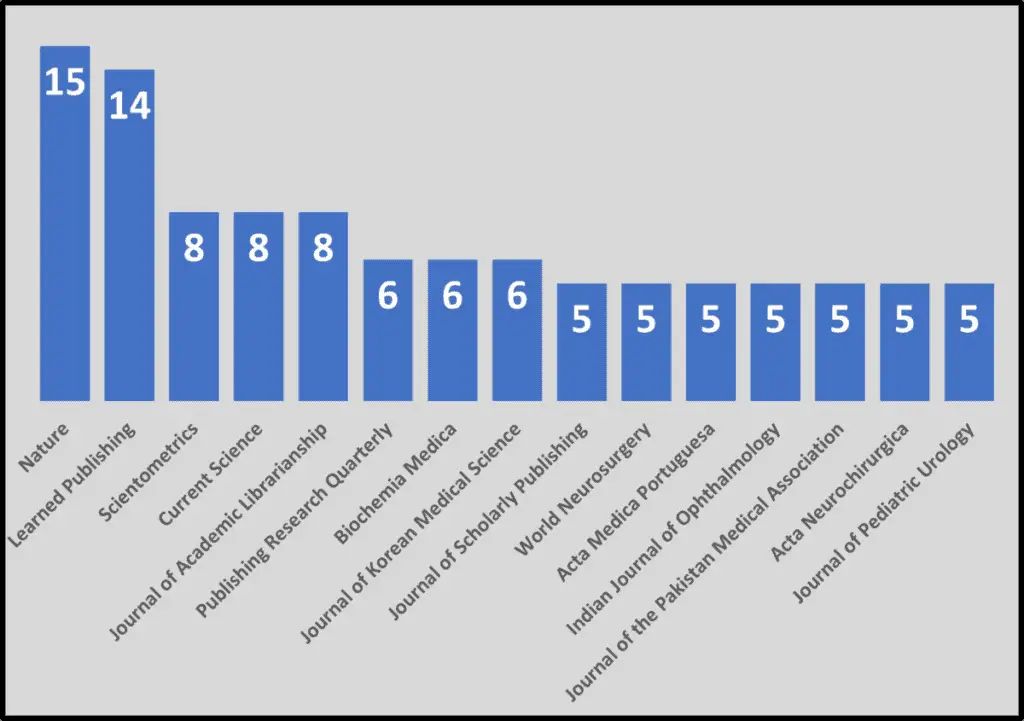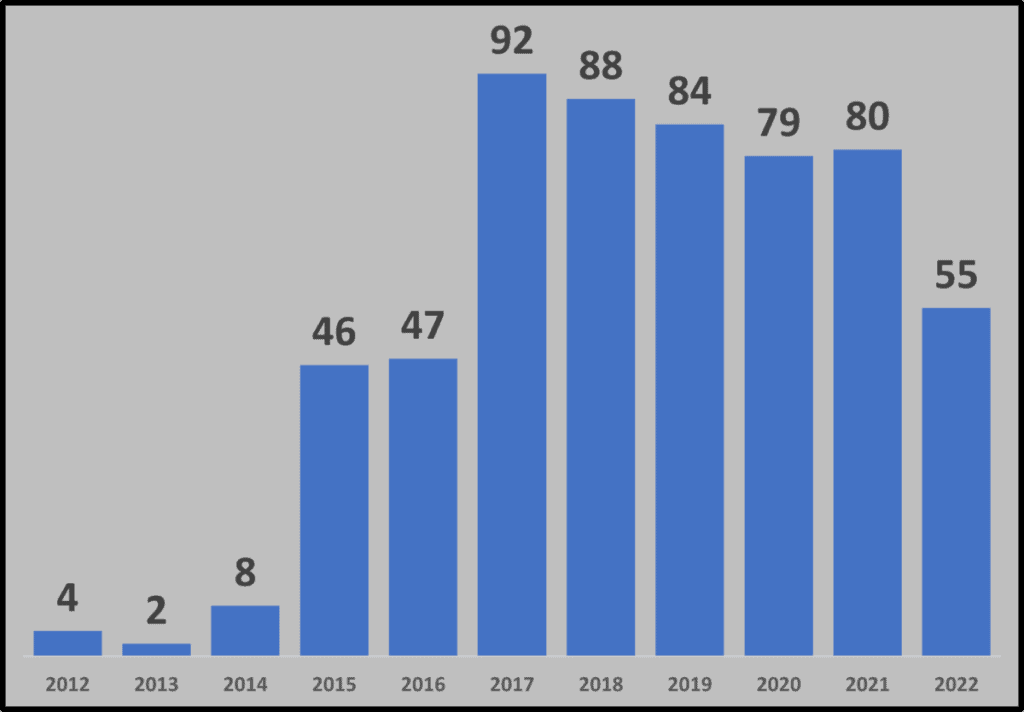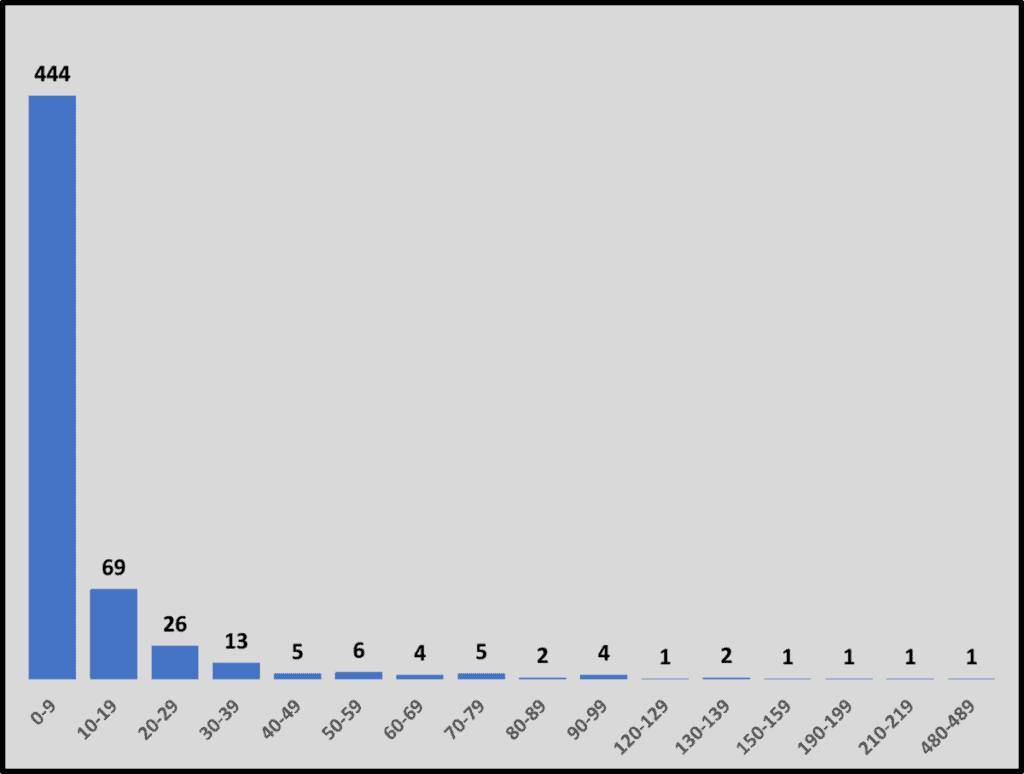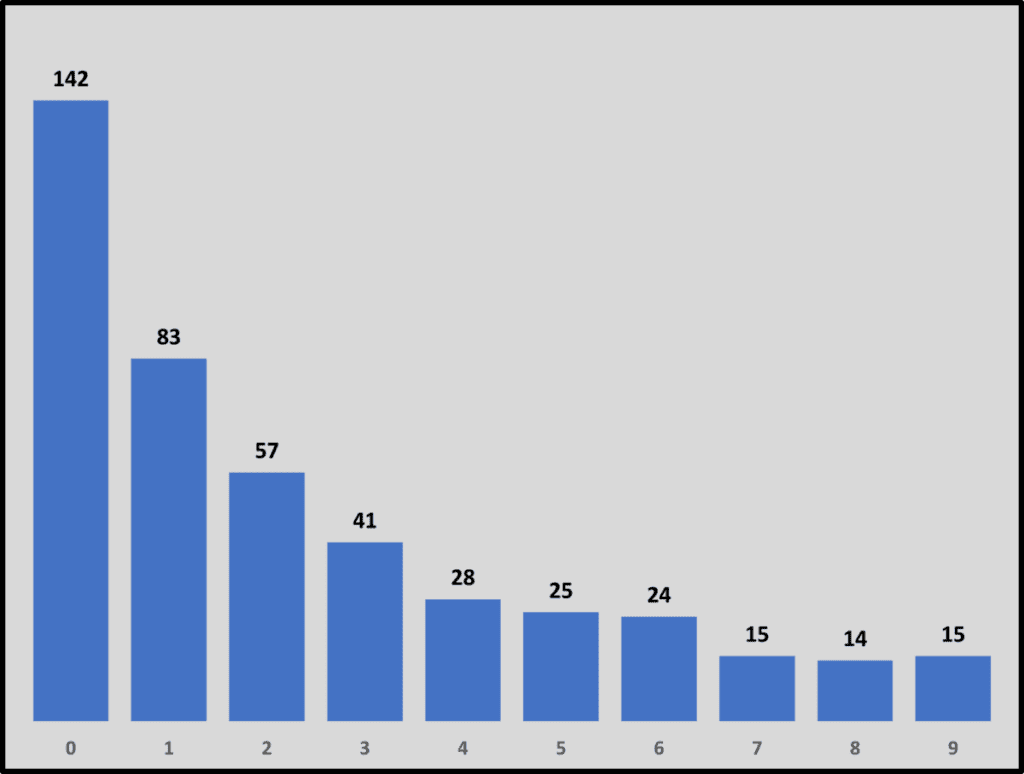Introduction
Every so often we take a look at which journals publish papers about Predatory Publishing. This might be useful to those who want to read about the topic, or to those who want to know which journals to submit to.
In this article, we provide some high-level data that may be of interest to researchers in this area.
Data Collection
The data was collected from Scopus on the 29 November 2022. The search term that was used was:
( TITLE ( “Predatory Publishing” ) OR TITLE ( “Predatory Journals” ) OR TITLE ( “Predatory Publisher” ) )
That is, we searched for the three terms shown above but ONLY in the title of articles.
We recognize that we could have used different search terms or widened the search to include the abstract and keywords, and you may like to do this, if you see value in doing so.
For our purposes though, this search term was adequate for what we needed.
High Level Statistics
The above search term returned 585 articles, which had been published in 377 different journals (we use the term ‘journal‘ in its broadest sense as it may include book chapters and other types of publications).
Of those 377 journals, 273 have only published one paper on the topic of predatory publishing and 66 have only published two papers. Or, to put it another way, 38 journals have published three or more articles, which addresses predatory publishing. These 38 journals have published 180 articles.
We also recognize that not all papers on this topic will have been captured, as the Scopus bibliographic database does not record all papers that have been published. For example, the earliest papers that are recorded in Scopus date from 2012, but we know of earlier papers by Jeffrey Beall that are important in the context of predatory publishing. So, if you are really interested in the complete picture of predatory publishing publications, you would need to look beyond Scopus and carry out your own literature review.
Top 15 journals
Figure 1 shows the top 15 journals, as rated by the number of articles they have published on the topic of predatory publishing.
It is interesting, though perhaps not surprising, that the most popular journals are Nature and Learned Publishing. There is a marked difference to the next three journals which have all published eight papers.
Publications by year
Figure 2 shows the number of papers published each year, on the topic of predatory publishing.
It is interesting to see that since 2017, the number of papers being published has declined. Based on our experience, we would have expected to see a marked increase but, perhaps, this is a function of the search terms that we are using. Or perhaps interest is waning and the number of papers, however measured, is slowing down.
Of course, the data for 2022 is not yet complete and it will be interesting to see if this is less that the 79/80 in the previous two years.
On a personal note, we hope that research is not slowing down into, what we consider to be a very important topic.
Citations
It is okay seeing how many papers have been published on predatory publishing, but what impact are those papers having? One way of measuring this is to look at how many times the papers have been cited.
Citation counts
Figure 3 shows how many times each paper has been cited.
This figure shows that 142 articles (of the 585) have never been cited. That is, almost a quarter (24.27%) of the papers have never been cited. A further 15.51% (83 articles) have only been cited once.
We suspect that most disciplines follow a similar pattern (i.e. many papers are never cited) but it is a little disappointing that so much research on predatory publishing never has any impact.
Final Remarks
When we started writing this article, we assumed that there would be a yearly increase in the number of papers that have predatory publishing (and other similar terms) in the title. We were surprised to see that this is not the case.
It is also a little discouraging that so many papers are never cited.
On the plus side, it is good to see that research into predatory publishing does have a reasonably large body of peer reviewed scientific literature and that can only be a good thing.
We would like to believe that, in the future, research activity will increase so that we can stamp out the pernicious practice of predatory publishing.






